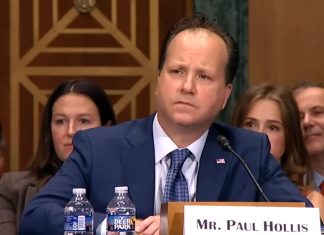This third article about our visit to the U.S. Mint at Philadelphia offers behind-the-scene information and photos about the artistic design process in minting coins and medals.
If you could, would you sculpt using clay or a computer? United States Mint artists at Philadelphia have their choice, with some switching between the two mediums.
It’s fascinating to watch gifted artists breathe life into models. The folks at the Philadelphia Mint have been doing a lot of that lately, more than any other year, with 83 designs already sculpted for coins and medals released in 2013.
It was a joy visiting with U.S. Mint sculptor-engravers Don Everhart, Michael Gaudioso, Joe Menna and Phebe Hemphill. They’re among the group of artists who take sketches and shape them into the models that are used to produce master hubs, master dies and working dies for striking coinage and medals.
When we visited the Mint last month, the artistic team was in high gear creating sculptures for a variety of upcoming releases. That gave us an opportunity to see the traditional approach to sculpting with clay and plaster and watch newer methods of sculpting with a stylus and computer.
Traditional Sculpturing
In traditional sculpturing, an artist with special tools captures the essence of a sketch in clay.

We snuck behind Michael Gaudioso as he was using clay on a Ren basin to bring his Code Talker Congressional Gold Medal design to life. Ren basins are circular, have depth and act as a working foundation or template for sculpting.

Created by a CNC milling machine to the specifications needed for the final coin or medal, Ren basin’s already have common design elements such as mottos and dates.

Artists take over from there, adding layers of clay as they sculpt the design on top and within the rim of the Ren template.

Mike showed us a nifty sculpting technique using a transparent overlay. It has a tracing of the sketch, and it’s taped to the top of the Ren basin. As a visual aide, Gaudioso flips the transparency up and down as he shapes the clay to a medal design in 3D.

The resulting clay model is then captured in plaster where additional refinements are made.
Digital Scanning of Plaster Models
Final plaster models are digitally scanned and reduced to the actual coin or medal size. This process is completed with a high resolution scanner. Section by section, it digitally maps the hills and valleys of a plaster model with a sensitivity that can pick up finger prints. The millions of mapped data points are sent to digital design software for modifications and then to a CNC milling machine to cut the steel hubs and dies for production.




Sculpturing Digitally
Digital sculpting requires the same mental artistry as the traditional method, but models take shape within computer software instead of on clay.
Joe Menna was the first full-time digitally skilled artist hired by the U.S. Mint, and was instrumental in making the Mint a world leader in digital coin design and development.

Joe’s mastery over digital sculpturing is something to behold. We were a bit shocked to watch Joe sculpt digitally since we rely on imaging software ourselves for coin effects. Our use is at a kindergarten level compared to Menna’s seasoned approach. With stylus in hand, he demonstrated layering and showed how quick changes can be made to a digital model. While working, Joe discussed the team culture at the Mint, talking about designer initials on coins and how they don’t show the many hands needed to produce coinage.


An advantage in digital sculpturing is its time-savings. It bypasses the traditional clay to plaster method, adds the ability to make later design refinements without having to redo time-consuming steps, and it skips the high resolution scanning stage.
Mixing Traditional with Digital Sculpturing
Phebe Hemphill sculpts traditionally but will also use computer software to later refine her models. This mixing of the methods cuts turnaround times.

As we watched, Phebe demonstrated the use of another software program, called ZBrush. Using it, she refined her 2014 Shenandoah National Park Quarter design.
All the Mint artists we talked to were exceptionally dedicated. No better example, Phebe hiked to Little Stony Man where she took the photos she used to create her quarter design.


Common to Both Methods
Completed models, whether in plaster or digital, are always reviewed for errors such as misaligned letters, incorrect or missing design elements and manufacturability.

When they are approved, the scanned or digital data is sent to the Mikron CNC milling machine to mill a blank piece of steel into hubs and dies that are used to strike the coins or medals.
Next Article in Series About the Philadelphia Mint
Stay tuned to CoinNews.net for more articles and photos about the Philadelphia Mint. The next article is scheduled for Friday, September 13. It describes the next stage to produce coins, creating master hubs, master dies and working dies from rods of steel. Other upcoming articles will show how circulation coins are minted and the making of bullion and collectible America the Beautiful Five Ounce Silver Coins.






